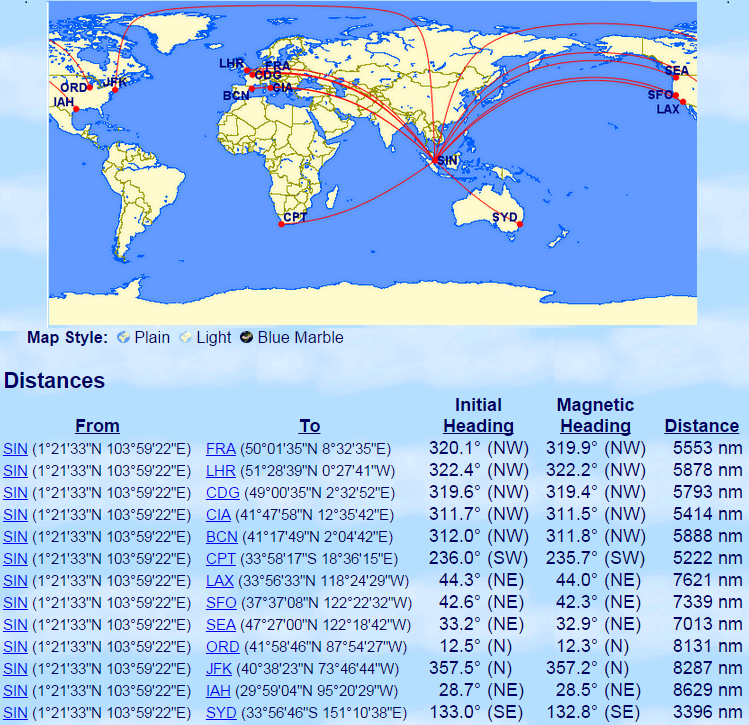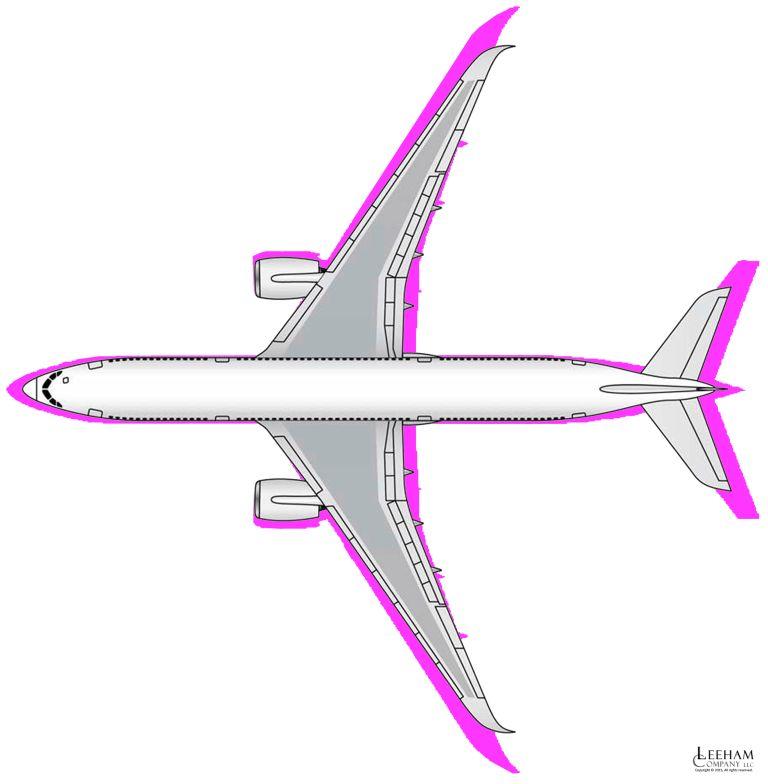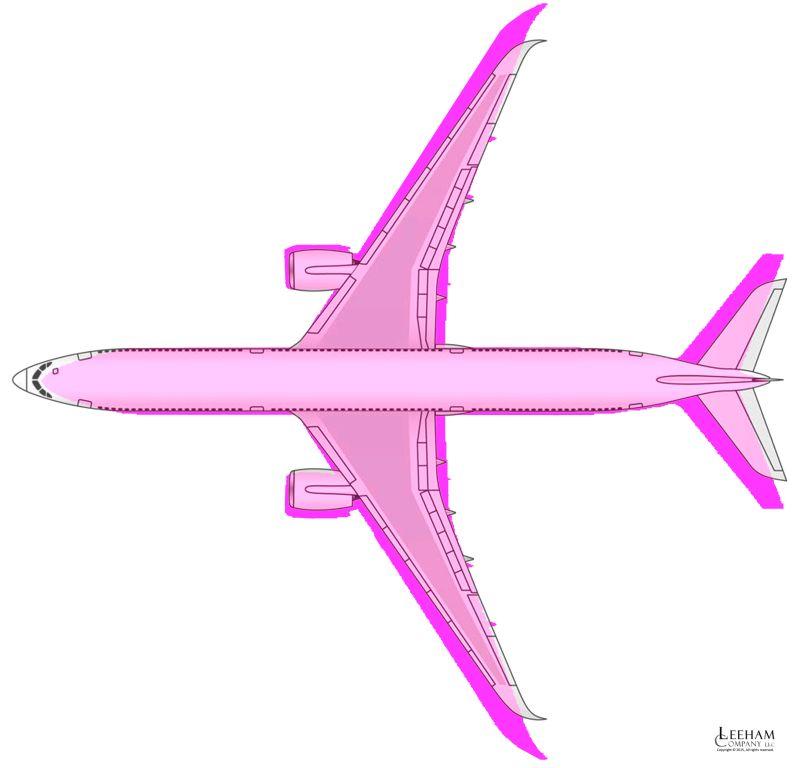Leeham News and Analysis
There's more to real news than a news release.
Options for Singapore Airlines to operate direct flights to the US, part 2.
By Bjorn Fehrm
Subscription required.
July 23, 2015 © Leeham Co. After having looked at Airbus’ A350-900 and Boeing’s 777-200LR for filling Singapore Airlines (SQ) need for an Ultra Long Haul (ULH) airliner we now complement the analysis by including Airbus’ and Boeing’s up and coming A350-1000 and 777-8X.
Singapore Airlines has 70 A350-900 on order to replace 25 Boeing 777-200ER. There would also be place in that order to replace the 25 777-300ERs that Singapore operate, most likely with the A350-1000 (SQ has the right to change model).
The 777-8X is Boeing’s replacement aircraft for 777-200LR and direct competitor to A350-1000. It is interesting to compare these two types flying the Trans-Pacific routes non-stop from Singapore to US that we flew with A350-900LR and 777-200LR and to compare the per seat fuel consumption versus the smaller aircraft.
Summary:
- The 777-8X and A350-1000 are a sized larger than both 777-200LR and A350-900LR, and can therefore transport more payload.
- The 777-8X is designed as an ULH aircraft, the A350-1000 not. We explore what this means for the US missions.
- Flying to the US which of these four aircraft will be the most efficient? And carry an interesting payload?
Singapore Airlines was the key airline that helped Airbus to configure the final A350 to A350XWB (Extra Wide Body) after the market said it did not want a warmed-over A330 aircraft. As such SQ was instrumental in designing the cabin for nine abreast economy.
The reward for giving SQ a lot of say in the A350XWB was an order for 70 aircraft. Officially all -900s replace 777-200ERs but the sums don’t add up. SQ operate 25 777-200ERs, add to that 25 777-300ERs with an additional seven regional 777-300. Things still don’t match. It would seem plausible that the A350 order is to eventually replace all the 777s with some growth.
SQ also operates 31 A330-300s for intra Asian operations. These will be replaced by 30 Boeing 787-10s that SQ ordered two years ago. So a mix of A350-900 and -1000 is likely to replace at least part of the present 777 fleet. It remains to be seen if Singapore elects to complement with the larger 777-9X and longer range 777-8X.
Non-Stop US with larger aircraft
To understand SQ options for the segment above in addition to the discussed A350-900 and 777-200LR we entered A350-1000 and 777-8X into our model and flew them on our typical missions to the US, 8,500nm. Singapore’s actual distances to their preferred US cities are given in Figure 1.

Figure 1. Singapore Airlines major international destinations with distances. Source: Great Circle Mapper.
The Aircraft.
The 777-8X is a size-class larger than 777-200LR, Figure 2. It seats in our normalized two class seating 360 seats, 54 Business lie flat B/E Diamond angled at six abreast with 60 inch pitch and 306 Economy seats at 32 inch pitch and 10 abreast. This compares with 296 seats for 777-200LR as 42 Business lie flat B/E Diamond angled at six abreast with 60 inch pitch and 254 Economy seats at 32 inch pitch and nine abreast.
The 777-8X is also a size larger than A350-900, Figure 3. The A350-900 seats 313 seats using our normalized two class cabin rules, with 46 Business lie flat B/E Diamond angled at six abreast with 60 inch pitch and 267 Economy seats at 32 inch pitch and nine abreast.
The A350-1000 is 7m longer than A350-900 at 73.8m and thereby also longer than Boeing’s 777-8X, Figure 4. It seats 357 seats using our normalized two class rules, with 54 Business lie flat B/E Diamond angled at six abreast with 60 inch pitch and 303 Economy seats at 32 inch pitch and nine abreast.
The planview pictures gives a good sense for the different sizes of the aircraft. The A350-900 and -1000 are lighter than the Boeing models with the larger -1000 weighing about the empty weight of the 777-200LR whereas the -8X is around 15 tonnes heavier. The higher weight comes from larger wing with longer span and larger and stronger engines, 105,000 lbf instead of 97,000 lbf. The -8X compensates the heavier empty weight with higher Max Take-Off Weight of 351t versus 308t for -1000. It also has more efficient engines and a longer wing span, mitigating its drag due to weight.
(Update, June 29, 2016: Bloomberg News reported June 29, 2016, that Boeing is mulling a 777-10. Continuing with the original post below:)
We wrote that the GE-9X has increased its Take-Off thrust to max 110,000 lbf. Apparently the -8X and -9X is not using this extra capacity right now. It seems to be reserved for future use. The similar passenger capacities of 777-8X and A350-1000 are achieved in different cabin concepts, the -8X house 350 passengers in a shorter fuselage with the economy section at 10 abreast. The longer A350-1000 uses nine abreast for the economy section and therefore need an additional four seat rows to house its economy passengers.
The shorter aircraft is felt in the cargo domain for the -8X; the -1000 can take 44 LD3 containers versus 40 for -8X.
Ultra Long Haul capabilities and economics
Coomparing then A350-1000 and 777-8X, the latter is the true Ultra Long Haul aircraft. It has a nominal range of 9300nm carrying 350 passengers. When we fly the aircraft with our 360 passengers over our 8,500nm range it consumes 120 tonnes of fuel or 350kg per passenger.
This shall be compared to 335kg per seat for A350-900 when flying the distance with the normalized cabin of 313 seats (8,500nm is the range limit for -900LR in this confiiguration). The A350-1000 runs into problems in its standard version at a distance of 8,500nm. Its design range with our 357 seats normalized cabin is 8,200nm and it will then use all tank volume. To extend the range to 8500nm we need to restrict passenger payload down to 325 passengers. The A350-100 then consumes 355 kg per passenger, slightly more than 777-8X.
By being forced to reduce the passenger count we have taken away the advantage of lower empty weight per passenger for A350-1000. Now the -1000 and -8X are similar at 480 respective 490 kg empty weight per seat. The more efficient engines and wing then neutralize the fact that the A350-1000 can start the mission 30 tonnes lighter than the 777-8X, 308 tonnes versus 338.
Cargo capability.
As described, the A350-1000 has a larger cargo capacity in terms of volume. At long range it is weight limited and can not fill the cargo area to its 44 LD3 capacity. In our example it is at its weight limit with passengers and their bags and can not take any cargo payload. The 777-8X would have around 10 tonnes additional lift capacity and could therefore load part of its 29 free LD3 positions after the containers for the passengers’ bags are loaded. The fuel consumption will increase as the aircraft is now starting at the Max Take-Off Weight of 351 tonnes but this extra fuel consumption can be spread over more revenue.
Summary
Singapore Airlines would have to wait another seven years to get an aircraft with modern economics designed from the outset for the long distances they need for their non-stop flights to the Americas. The distance involved is what Boeing’s 777-8X was designed for. On such missions it can carry a full cabin and additional cargo.
Airbus competitor in the seat segment is a long range aircraft but not an ULH. It reaches the Take-Off Weight and tank limits on such distances. It will have to block off around 30 economy seats to make the distance with passengers and their bags as payload. On more normal missions of below 16 hours its lower weight will gain it a slight fuel efficiency advantage over the -8X.





Merci !
So in typical layout (your normalized two class or even Airbus 3 class layout) A350-1000 will take-off with full tankage.
So MTOW bump can do nothing for ULH if no more tankage is provided (ACT ? 5.8t fuel for A340 ACT).
Let’s see what can be done between 2017 and 2021 on this plane.
777-8 is a mighty airplane…
What’s the aircraft utilization pattern on SIN-JFK, is it possible for the plane to stick only on this routes or shall they be employed on other routes due to scheduling constraints?
Do you have returns on how the “forced” 10 abreast economy is received in the diminishing 9 abreast community (Cathay, Singapore, Japanese ?)
Bonne journée
PS : what bed length for your normalized “business” ?
Hi Poncho,
the A350-1000 needs an engine PIP or similar to bring its fuel limit up to 8,500nm, right now its around 8,300nm. So while a MTOW will help, the payload vs. range trade will not be optimal similar to a 777-200LR before you equip it with ACTs. There is no ACT solution for A350-1000 so any gain in NAMs (Nautical Air Miles per units of fuel) would be welcome.
The 777-8X is the aircraft for these kind of missions, that is also why the Middle East carriers have ordered it in larger numbers.
The 777-8X is universal with its capabilities, it can be used on all Americas destinations, the A350-1000 more limited, more US West coast with this kind of cabins. A premium heavy cabin with lower overall seating can open more of the US for the -1000.
Re 777X 10 abreast we don’t know how the extra width of the X will pan out. I have flown today’s 10 abreast. While a bit cramped it was not that terrible and I am not slim. Important is then pitch and a good seat overall, absolutely no IFE boxes around your feet.
Bed length for the B/E Diamond lie flat is 78”, the seat is used by United for their 787 First Business class. We use it in our normalized LOPAs as it behaves pretty much like a broader normal seat (22 in) unlike stagger or herringbone concepts.
Thanks
787, 777X, A350 are all good airplanes
And for sure, one size does not fit all !
Qatar’s B/E is a bit longer (so less angle) at 80in if I remember
Airbus use shorter bed length for its LOPA I guess.
The Qatar B/E Diamond is a special version for them, the standard version is 78in me thinks, KLM has it as well.
Is it fair to assume then that the A350-900LR remains the most economic choice at 335kg/seat?
Yes, but it has limitations, it can do 8,500nm with passengers+bags only, no cargo and there will be days in the winter when its 8,500nm still air range will not be sufficient to get it back to Singapore in one hop. The main thing is that an aircraft which does not bring compromises and which is economical is seven years away. Lets see what SQ decides to do, that they need to serve US direct is understandable, any intermediate stop mean a business traveler lose 3-5 hours, then they rather book with the competition out of South East Asia. Why book via Singapore if you can get to US via HongKong with a direct flight once at the CX hub?
Mr. Fehrm,
Thank you. That absolutely makes sense. The performance of the 777-8x is extraordinary. I’m surprised that Airbus did not plan for a true ULH A350 in response to the 777X.
Common sense would have suggested that since the A35o family is smaller in capacity, they could make a bite with longer range capabilities.
Do you have a rough estimate of how the original -900R would compare to the 8X?
The A350-900R as proposed when the A350XWB was launched would have around 9,600nm range with our normalized 313 passengers.
Hi Bjorn,
I have read the comment from Poncho, but still I would like to ask you what would be the range of A351 with 322tn MTOW @ your 357pax configuration? I think this will be pretty much the MTOW in 2020 as it is coming from the A350-2000 information coming into light. This value is not coming by accident. It is the 308*280/268 MTOW gain by A359 after tests and the margin left in Airbus’s design. A fuel burn improvement of 2-3% should be expected also in TEN by 2022 when the -8X will come online. If Boeing/GE won’t overachieve like the -300ER, the race in the end will be pretty close I think, although both started from a different starting point.
Hi Bjorn,
Airbus has published the airport compatibility report for A351. http://www.airbus.com/fileadmin/media_gallery/files/tech_data/AC/Airbus_AC_A350XWB-Jun16.pdf
The standard 2-class seating is configured at 54 Business with 60″ pitch and 315 Economy at 32″ for a total of 369 seats. The range is ~7700nm for this cabin according to Airbus graph. The extra 12 seats compared to your model shave ~500nm?
To revise my comment the range seems to be ~8000nm. I thought each grid is 500nm but it is 1000nm.